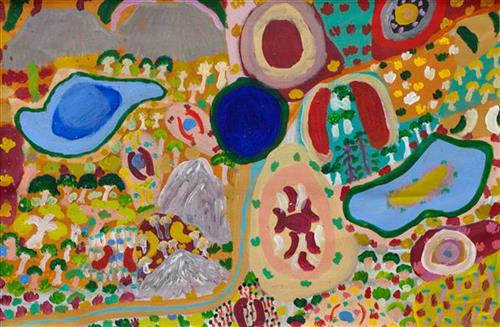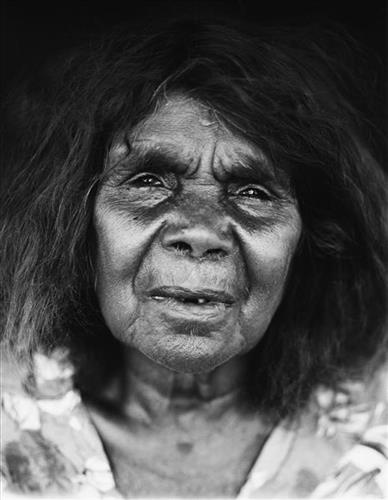111581717394
Karlamilyi
“This Karlamilyi area, big land. That’s a ngurra (home camp) belonging to our old people, Warnman people. We talk for our land, our jila (dreamtime snake). At Nyayartakujarra (Lake Dora) two snakes been killed. Right here they got crook in the dreamtime. All the men, Nyanatjarra and Warnman, they were singing. One young fella, he threw a spear into the snake. That snake felt something there, got killed and burned.
There’s a big rain there, rain time. That river running through, he called Pirnpi. Whitefella way is Rudall River. There’s a bird, karuwarlkun (magpie), flying and singing everywhere in the Rudall River there. There’s a claypan there too, big claypan. Pangkartal we call him. Fill him up water when the rain time comes. Snake living there in Pangkartal, big one. He [the snake] going to listen to the owner of the land. When we sing out to him in a Warnman way, we tell him “Stop, don’t get cheeky. We coming in [to the land]”. He not cheeky, he a good one. Quiet snake.
The name for Kintyre is Yantikuji (Yandicoogina), red hill over there. They working, doing the mining there now. Next to Yantikuji is a big claypan, Wulpulpa, main camp and a water. That’s a hunting place. Plenty of bush tucker round there; kanjamarra (yam, bush carrot), like a carrot growing in the ground in the river bed there. You pull it out, just like a carrot! Lungki (witchedy grub), and jatarrpa, that’s like a seed, you gotta clean him up and grind it to make a flour wheat, make a damper in the waru (fire). We gonna get that seed and show you fellas. Minyarra (bush onion) there, and ngapurta (sweet, patterned green fruit, eaten raw), they all grow in the river banks.
I [Lily Long] was born there in Karlamilyi River, that’s my Country. Jartarr Ngarra, that’s the name for the place and that’s my name. That’s the living water place.”
– Lily Long and Amy French
This painting depicts Karlamilyi, also known as Rudall River National Park. It is situated in between the communities of Parnngurr and Punmu and is a very beautiful and important area. Rudall River runs through Karlamilyi into Nyayartakujarra, or Lake Dora, a very large salt warla (lake). Karlamilyi is Warnman country, and lies in the very heart of the Martu homelands.




